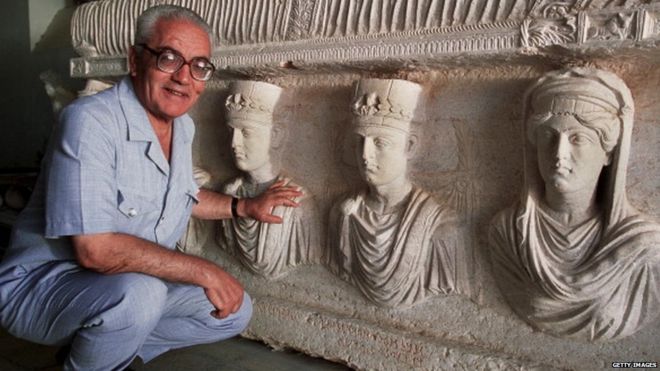
ISIS have executed archaeologist Khaled al -Asaad a renowned antiquities scholar in ancient Syrian city of Palmyra
According to a senior Syrian official, ISIS beheaded and then hung Asaad’s body on a column in the main square of Palmyra’s historic site because he apparently refused to reveal to his captors where valuable artefacts had been removed for safekeeping.

BYPASS THE CENSORS
Sign up to get unfiltered news delivered straight to your inbox.
You can unsubscribe any time. By subscribing you agree to our Terms of Use
Latest Video
Assad, who was taken hostage after IS seized the Unesco World Heritage site this year, had worked as the chief of antiquities in the ancient city of Palmyra for over five decades.
RT reports: Syria’s Director of Antiquities Maamoun Abdulkarim told Reuters that Asaad’s family had informed him that the 82-year-old scholar was executed by Islamic State on Tuesday. The archaeologist had been detained and interrogated for over a month by the ultra-radical Sunni Muslim militants, Abdulkarim added.
The Syrian state news agency Sana and the UK-based Syrian Observatory for Human Rights both report that Asaad was beheaded in front of dozens of people on Tuesday in a square outside the town’s museum.
His body was then taken to Palmyra’s archaeological site where it was hung from one of the Roman columns.
The Guardian reports: Amr al-Azm, a former Syrian antiquities official who ran the country’s science and conservation labs and knew Asaad personally, said the “irreplaceable” scholar was involved in early excavations of Palmyra and the restoration of parts of the city.
“He was a fixture, you can’t write about Palmyra’s history or anything to do with Palmyrian work without mentioning Khaled Asaad,” he said. “It’s like you can’t talk about Egyptology without talking about Howard Carter.”
He added: “He had a huge repository of knowledge on the site, and that’s going to be missed. He knew every nook and cranny. That kind of knowledge is irreplaceable, you can’t just buy a book and read it and then have that.
“There’s a certain personal dimension to that knowledge that comes from only having lived that and been so closely involved in it and that’s lost to us forever. We don’t have that anymore.”
Before the city’s capture by Isis, Syrian officials said they moved hundreds of ancient statues to safe locations out of concern they would be destroyed by the militants. Isis was likely to be looking for portable, easily saleable items that are not registered.
Azm said Asaad had played a role in evacuating the contents of the museum prior to Isis taking control, which meant he faced certain arrest. “He’d been there for so long and been part of that city for so long, maybe he figured he lived there all his life and he would die there too, and that’s unfortunately what happened,” he said. “It’s terrible.”
ISIS took control of Palmyra a World Heritage-listed city and one of the Middle East’s greatest archaeological sites back in May.
Syria’s director of antiquities, Maamoun Abdulkarim had said that hundreds of statues have been moved from the Palmyra site to locations safe from the ISIS militants who deemed the artifacts as idolatrous.
In June ISIS destroyed two tombs in Palmyra. One was a shrine belonging to Mohammad Bin Ali, a descendant of Prophet Muhammad’s cousin, Imam Ali. Another 500-year-old tomb belonging to the Sufi teacher Nizar Abu Bahaaeddine was also decimated.


